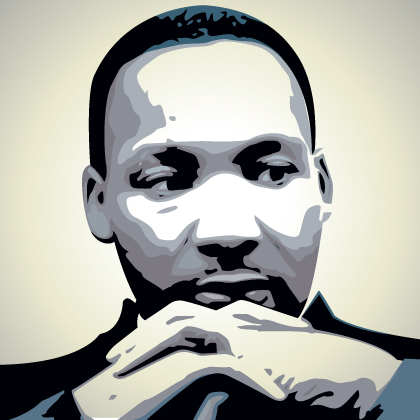Floyd protests powered by freedoms of assembly, petition
First Five by the Freedom Forum Institute
Jun 4, 2020
By Gene Policinski
Download Word doc here.
Two of our least-known freedoms, petition and assembly, are at the heart of our nation’s most profound changes.
Today, those two freedoms are powering a deep national conversation both in person and online involving millions of us about how we should deal with racism, bigotry and criminal justice in the wake of George Floyd’s death while in police custody in Minneapolis.
Some of those conversations have been marred by the violence inflicted by a relative few. As the final words of the First Amendment’s 45 words provide, we have the constitutional right “peaceably to assemble, and to petition the Government for a redress of grievances.”
Stores have been looted and buildings set afire. Journalists have been attacked, injured and arrested in multiple cities while reporting on the protests. And at last count, well over 1,000 demonstrators have been arrested and many more thousands have been teargassed, hit with pepper balls, beaten or taken into custody in police sweeps.
Serious situations, to be sure. But we would be wrong to permit those very visible and tragic moments to distract us from, first, grieving with Floyd’s family, and second, keeping sight of the larger point that, from police procedures and racial profiling to economic inequality and its impact across society, we have national problems to solve.
Nothing in those 45 words instructs how assembly and petition are supposed to work. But we’ve often taken to the streets when facing our nation’s most profound times to let our voices be heard. And #walkwithus shows signs of being a long-running rallying point, much like #blacklivesmatter and #metoo
Protest has served as both a release and a megaphone for views that range from “Occupy Wall Street” to the Tea Party movement to those protesting COVID-19 stay-at-home orders.
The 1963 March on Washington for Jobs and Freedom has a place in history firmly rooted as the setting for one of the nation’s most galvanizing public speeches: The Rev. Martin Luther King Jr.’s “I have a Dream” speech.
Assembly has been the tool of choice for those supporting “March for Our Lives” in the wake of the 2018 mass shooting at Marjory Stoneman Douglas High School in Parkland, Florida, and for the annual anti-abortion marches across America.
From women marching in the 19th and early 20th centuries to demand the right to vote, to the modern civil rights movement’s demand in the 1950s and ’60s for an end to legalized racial discrimination, formal policy and laws have come about because people of like minds gathered and petitioned government for change — and in the process, touched the minds and conscience of the nation.
The nation’s newest tools for conversation, declaration and self-examination are flooded with each as a result of Floyd’s death.
- The Facebook and Instagram accounts of many celebrities, magazines, even restaurant sites have turned from the usual plot discussions and topics to calls for solutions to racial discrimination, and prosecution of the police officers who were involved in Floyd’s death.
- In Nashville, award-winning investigative journalist Phil Williams posted old photos and newspaper headlines from that city’s history of protests, as different as black men and women fighting racial discrimination during the civil rights era are to largely white conservatives angered decades ago by a proposed state income tax (and reported to have thrown rocks through Statehouse windows).
- At #walkwithus, comments ranged widely — from one woman referring to some police action against protesters saying “Wow. White folks getting a small taste of what it’s like to be us” to “I feel your pain to the core of my being” to “the power of our ‘millennial’ generation is the ability to leverage our power of being instant authorities on the indelible ink of the Internet … the challenge now is to keep doing it with integrity.”
- Facebook staff — in a rare public rebuke of the social media giant, staged a virtual walkout Monday in protest of the site’s continued posting of what the employee group called “inaction on inflammatory posts” around the Floyd protests by President Donald J. Trump.
Even police in multiple cities have — at times to the surprise of demonstrators — joined protesters in visible ways to make a larger statement than their role might suggest:
- In Flint, Michigan, Genesee County Sheriff Chris Swanson spoke and then marched with demonstrators who were met by police officers in riot gear, local affiliate WEYI reported.
- In Portland, Oregon, New York City, Coral Gables, Florida, Washington, D.C., and Des Moines, police officers knelt in solidarity with protesters.
Protest’s long history in America extends, as most school children learn, to before the nation was founded in the Boston Tea Party to the Liberty Tree movement in which colonists gathered around a tree to decry — and sometimes hang British administrators in effigy.
Such protests and assemblies have also provided searing images — intended or not — of moments when the nation’s views were shifting on a particular issue. An iconic photo of peaceful crowds along the Reflecting Pool on the National Mall during King’s “Dream” speech remains an indelible image of the hundreds of thousands who gathered that day. And the searing pain shown by 14-year-old Mary Ann Vecchio, kneeling over the body of Jeffrey Miller, who was fatally shot by the Ohio National Guard moments earlier, freezes in time the impact – and risks taken — by student-led protests against the Vietnam War.
The nation’s founders didn’t give a timetable for change as a result of peaceful assembly and petition for change. Rather, they had a belief in future generations — that discussion and debate, even if rough and tumble, without government interference would lead to decisions benefiting the greatest number of us.
Slowly and at times imperfectly, our public self-review process of assembly and petition generally has propelled us to toward the best solution for all.
We’re a better society for the open and sharp turmoil over issues concerning minority, LGBTQ and women’s rights, and the extent to which personal religious liberty can be guaranteed along with safeguards from discrimination and bias.
The meaning and impact of protests by many over George Floyd’s death at least seems likely to outlast the damage done by a few. The nation’s founders enacted protections for our core freedoms so that we could adapt, reform and improve — but it’s up to us to use those freedoms.










